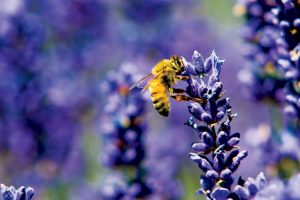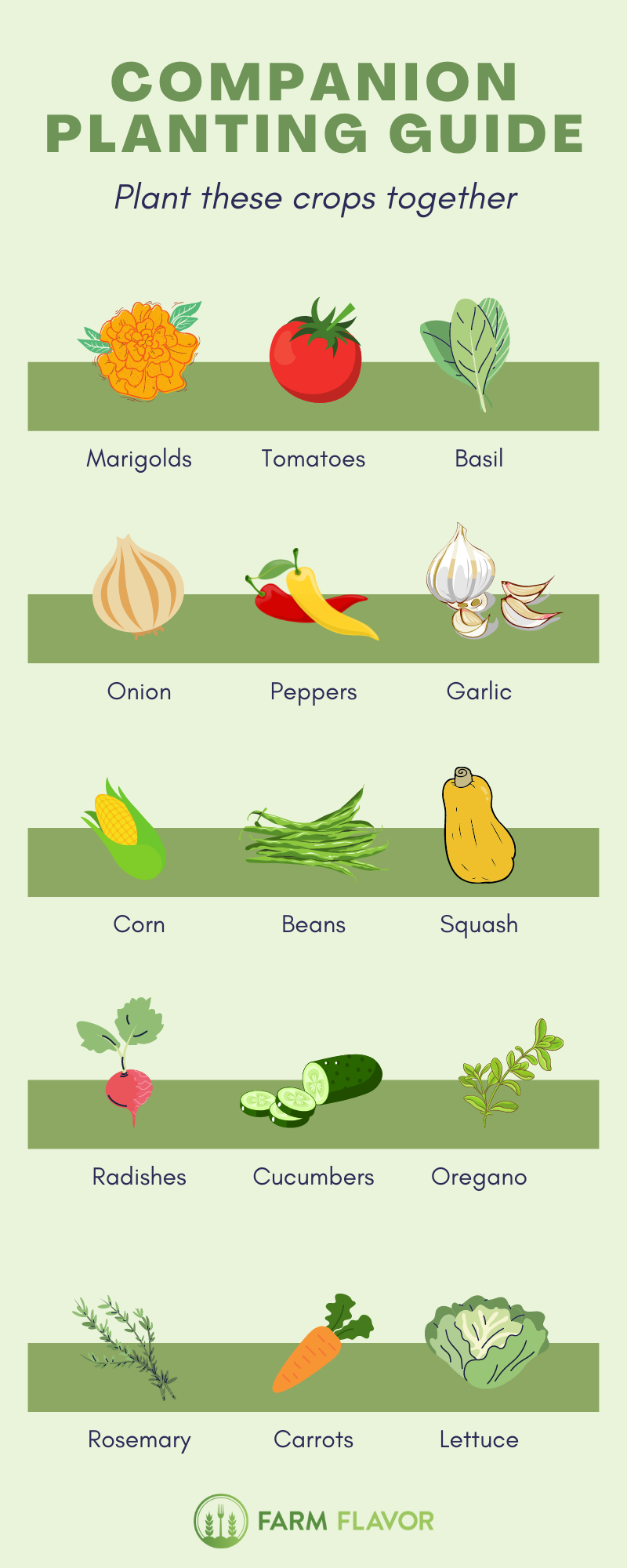Companion Planting 101

Have you ever heard gardeners talk about companion planting and wondered what it meant? If so, you’ve come to the right place. We’re diving into what companion planting is, how it can benefit your garden and how to put it into practice. Read on to learn more about this simple and effective technique you can easily implement in your own backyard.
What is companion planting?
Companion planting is a term that simply means growing multiple plants together for the benefit of one or more of those plants. It’s basically offering your plants a variety of friends who can help them grow stronger or protect them from garden pests.

What are the benefits of companion planting?
Implementing companion planting in your garden can provide a long list of positive effects on both your plants and soil. Some of the main benefits include attracting pollinators, deterring garden pests, aerating the soil, providing shade and saving space. Let’s take a closer look at each:
Attract more pollinators
We all know that plants need to be pollinated in order to produce fruit, but sometimes that requires a little extra work on the gardener’s side. Planting something brilliant and colorful, like a slew of nasturtiums or violas, can attract beneficial insects to your tomato plants, for example. The more pollinators around, the healthier your garden plants.
See more: 9 Fascinating Facts About Honeybees
Deter garden pests
Pests like aphids and squash borers can decimate a beloved garden in record time. Planting something like garlic alongside salad greens or potato rows can help prevent a wide variety of pesky bugs.

Aerate the soil
A less commonly discussed benefit of companion gardening is the ability of plants with long roots to aerate the soil. Carrots, for example, obviously grow deep down into the soil whereas lettuces and herbs are often shallow-rooted. In addition to helping aerate the soil, long-rooted companions help pull up nutrients from farther down in the soil and make them more readily available for the shallow-rooted plants.
See more: Companion Gardening Guide: Know Your Roots
Provide shade
Large and tall plants can provide ample shade for those smaller plants that need a little less love from the sun in order to thrive. For example, nestling a few rows of lettuce beneath a towering tomato vine is an excellent way to extend your homegrown salad production.
See more: Seed Starting Tips Every Gardener Should Know
Save space
Want to make the most of a compact garden? Companion planting could be your answer. Taking advantage of the extra soil space means you can do things like sneak herbs beneath tomato plants and tuck radishes around your peppers. When you use the extra space to grow plants you actually want in your garden, you can enjoy the added benefit of fewer weeds and unwanted growth.

How to Start Companion Planting
Since companion planting is as simple as placing two plants together in a shared space, you can easily implement the technique without much background knowledge. However, there are a few things you want to keep in mind before you dive in. Some plants work beautifully together while others can harm or stunt the growth of another plant growing nearby.
It’s best to look up what plants and flowers work well with precisely what you want to plant, but here are a few garden pairings that can benefit from growing side-by-side:
Tomatoes
- Basil
- Garlic
- Marigolds
- Spinach
- Parsley
- Carrots
Avoid: Eggplant, peppers, potatoes
Peppers
- Basil
- Onion
- Garlic
- Spinach
Avoid: Brassicas, fennel
Beans
- Corn
- Squash
- Spinach
- Cucumbers
- Potatoes
- Radishes
Avoid: Chives, leeks, garlic, onions
Carrots
- Radishes
- Lettuce
- Onion
- Rosemary
- Cilantro
Avoid: Dill, parsnips, potatoes
Cucumbers
- Cabbage
- Beans
- Lettuce
- Oregano
- Radishes
Avoid: Melons, potatoes, sage
3 Comments
Join the discussion and tell us your opinion.




[…] Companion Planting 101 – Farm Flavor […]
Thanks, very helpful
Helpful